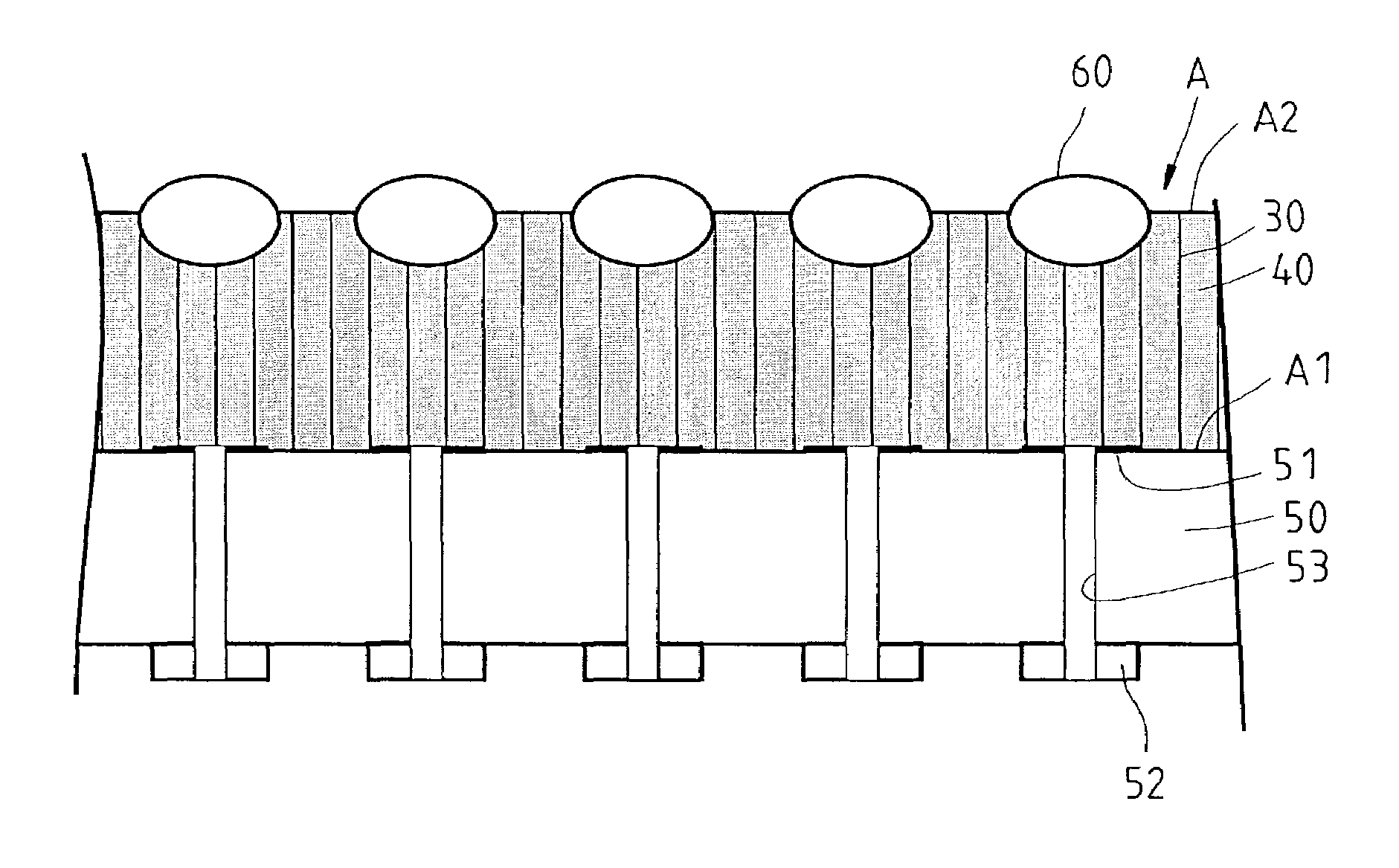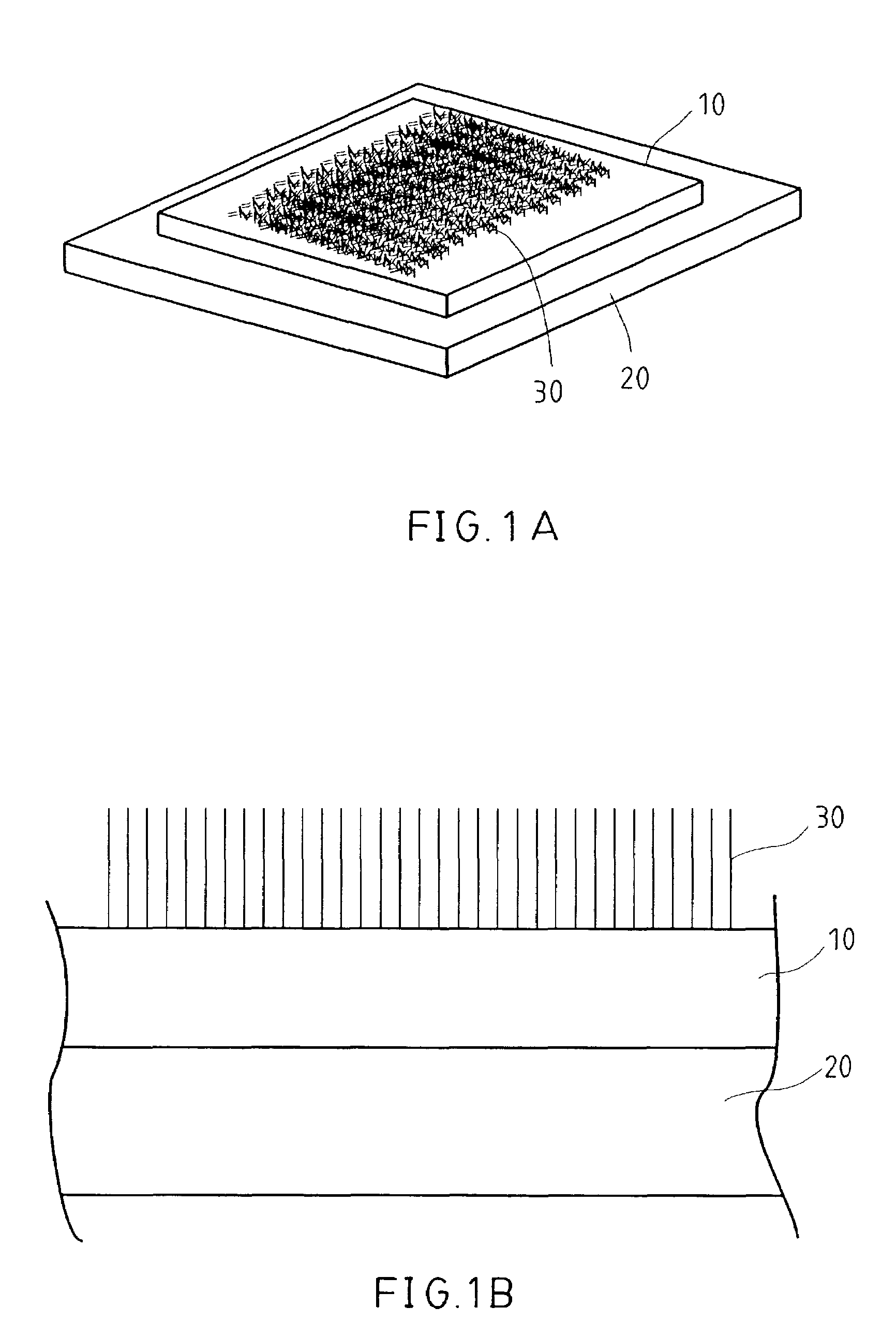High conducting thin-film nanoprobe card and its fabrication method
a nanoprobe card and high-conductivity technology, applied in nanoinformatics, printed element electric connection formation, instruments, etc., can solve the problems of high frequency and low cost, fabrication cannot meet the demand for ultra-fine pitch, and the future electronic device probing technology will encounter technical challenges
- Summary
- Abstract
- Description
- Claims
- Application Information
AI Technical Summary
Benefits of technology
Problems solved by technology
Method used
Image
Examples
Embodiment Construction
[0028]A high conducting thin-film nanoprobe card fabrication method in accordance with the first embodiment of the present invention includes the steps as follows:
[0029]1. Preparing a substrate 10 of magnetically non-conducting material, then putting the substrate 10 on a flat magnetic plate 20, and then spreading conducting nanotubes or nanowires 30 on the surface of the substrate 10 (see FIG. 1A), and then employing a vacuum evaporating, sputtering, or electroplating technique to coat the nanotubes or nanowires 30 with a layer of magnetically conducting material such as iron or nickel, thereby causing the iron or nickel-coated nanotubes or nanowires 30 to erect from the top side of the substrate 10 due to the effect of the magnetic field of the flat magnetic plate 20 (see FIG. 1B);
[0030]2. Applying a liquid polymeric resin material 40 of a predetermined viscosity, for example, liquid epoxy resin, polyamide, PMMA, polystyrene or polycarbonate (PC) to the substrate 10 to let the iro...
PUM
| Property | Measurement | Unit |
|---|---|---|
| Frequency | aaaaa | aaaaa |
| Electrical conductor | aaaaa | aaaaa |
| Deformation enthalpy | aaaaa | aaaaa |
Abstract
Description
Claims
Application Information
 Login to View More
Login to View More - R&D
- Intellectual Property
- Life Sciences
- Materials
- Tech Scout
- Unparalleled Data Quality
- Higher Quality Content
- 60% Fewer Hallucinations
Browse by: Latest US Patents, China's latest patents, Technical Efficacy Thesaurus, Application Domain, Technology Topic, Popular Technical Reports.
© 2025 PatSnap. All rights reserved.Legal|Privacy policy|Modern Slavery Act Transparency Statement|Sitemap|About US| Contact US: help@patsnap.com



